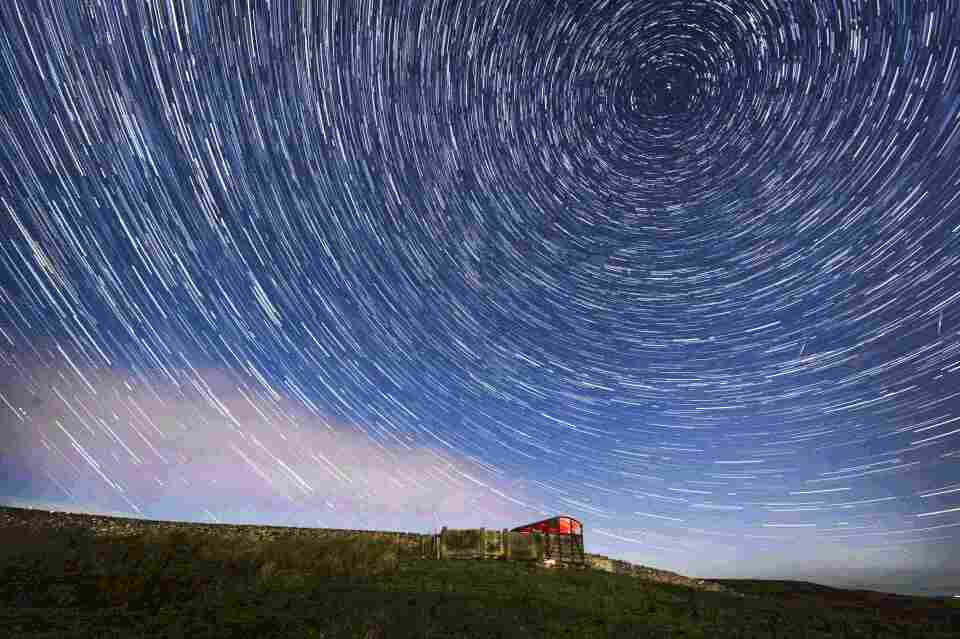Technology
Eta Aquariids meteor shower – when to see fireballs flying overhead this week

ONE of the best shooting star shows of the year will light up skies across the U.K. and U.S. this week.
Glowing fireballs are expected to appear over several nights as our planet passes through debris left behind by Halley’s comet.
PAMeteors and star trails during the Perseid meteor shower seen from near Hawes in the Yorkshire Dales National Park[/caption]
What is the Eta Aquariids meteor shower?
The Eta Aquariids meteor shower is usually active from mid-April to mid-May each year.
Eta Aquarii, the brightest star in the Aquarius constellation, gives the shower its name.
This is because the fireballs appear to radiate from this direction in the night sky.
The Eta Aquarids is actually one of two meteor showers created by debris from the Comet Halley.
Read more about space
Meteors appear when dust and rock crashes into Earth’s atmosphere at nearly 150,000mph.
Earth will pass through Halley’s path again in October, which will result in the Orionid meteor shower.
“The Eta Aquarids peak during early-May each year. Eta Aquarid meteors are known for their speed,” explains Nasa.
“These meteors are fast – travelling at about 148,000 mph (66 km/s) into Earth’s atmosphere.
Most read in News Tech
“Fast meteors can leave glowing “trains” (incandescent bits of debris in the wake of the meteor) which last for several seconds to minutes.
“In general, 30 Eta Aquarid meteors can be seen per hour during their peak.”
When is the Eta Aquariids meteor shower?
The best time to spot the shower is in the early hours of the morning.
During the peak, which according to the American Meteor Society lies on May 5 and 6, stargazers could see up to 30 meteors an hour.
However, plenty of fireballs will be visible for a few days before and after the shower’s climax.
You should be able to catch a handful of meteors per hour all the way through May 10.
How to see the Eta Aquariids meteor shower
You shouldn’t need any special equipment to see the meteor shower but clear skies will help.
It may be useful to locate the Aquarius constellation as the meteors appear to radiate from there.
The show is typically better viewed in the Southern Hemisphere.
Stargazers in the Northern Hemisphere may notice more meteors if they look toward the horizon.
Nasa previously gave some tips on how to make the most of your garden to catch a meteor shower.
It advised: “Come prepared with a sleeping bag, blanket or lawn chair.
“Lie flat on your back with your feet facing east and look up, taking in as much of the sky as possible.
“After about 30 minutes in the dark, your eyes will adapt and you will begin to see meteors.
“Be patient—the show will last until dawn, so you have plenty of time to catch a glimpse.”
What is Halley’s Comet?
Halley’s Comet is one of the most famous objects in the Solar System, and was named after its discoverer, the astronomer Edmond Halley.
He looked into reports of a comet approaching in 1531, 1607, and 1682, and concluded they were all the same one.
Comet Halley is the only known short-period comet that is often visible to the naked eye from Earth.
Read More on The Sun
Dust and rock deposited by the comet is regularly visible in the form of meteor showers.
The comet itself, however, comes around once every 76 years. It’s next due to be visible from Earth in 2061.
Get all the latest Science newsKeep up-to-date with the top Space & Astronomy storiesAll the latest Archaelogy news from dinosaurs to Ancient artefacts
We pay for your stories! Do you have a story for The Sun Online Tech & Science team? Email us at tech@the-sun.co.uk

